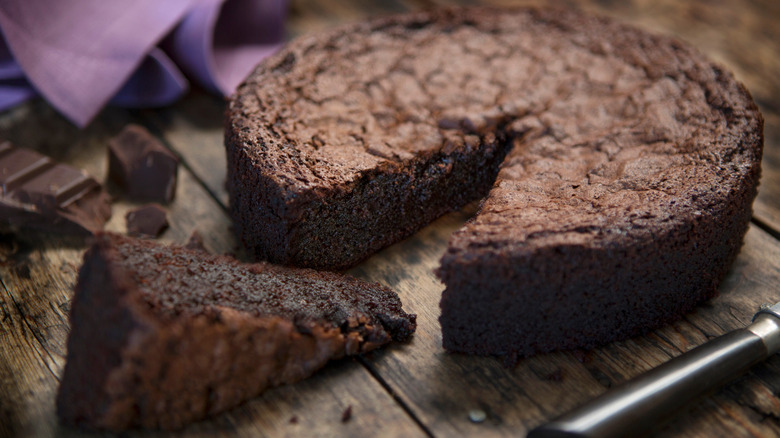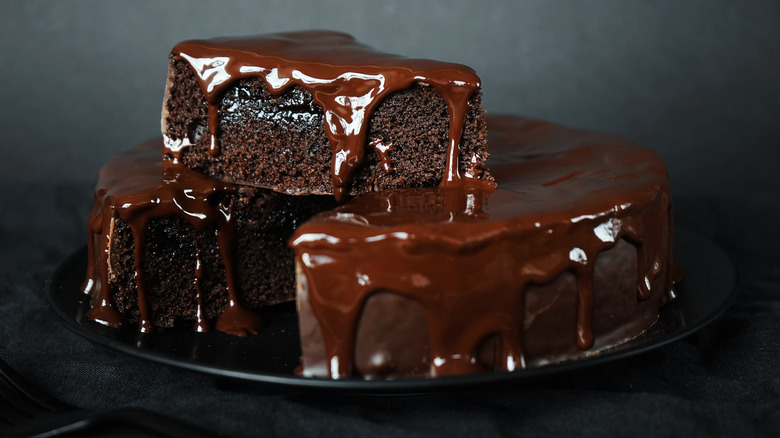Yes, You Can Bake A Chocolate Cake On A Stovetop. Here's How
Has there ever been a day that a slice of chocolate cake couldn't improve? There are only a couple of problems with the classic dessert: the time it takes to make and the number of dishes you have to clean. Luckily, there's a simple solution. Cook your cake on the stovetop instead. The key to this technique is the use of steam to create the moistest cake possible, and there are multiple ways to achieve this.
The first is to use the steam of the cake itself. All you need is a heavy-bottomed pan and your favorite cake recipe. Melt butter on medium-low and add your batter before covering and cooking the cake on low for 10 minutes. By doing this and keeping the cake covered as it cools, the moisture from the wet ingredients will evaporate and reform on the inside of the lid, creating a cloud of steam that infuses every inch of the cake with moisture.
You can also make this cake by infusing extra water into the process. This method is slightly more involved, requiring a 1-inch thick coil of aluminum foil set at the bottom of a Dutch oven, then adding water to partially cover the foil. Pour your mixture into a smaller cake pan and place the pan on the foil ring, bringing the Dutch oven to a boil before cooking on low for 20 minutes. The extra water and space inside the pot will create the lightest, fluffiest cake imaginable.
Tips to perfect your stovetop cake technique
There are advantages to either of these methods. The simple pan-top is quicker and lighter on dishes to clean, while the Dutch oven requires precision to create a stable foil ring while yielding a cake with even more moisture. However, there are some things to keep in mind to maximize either technique.
If using the former recipe, start with a heavy-bottomed pan. Whether it's copper, cast iron, or Gordon Ramsay's favorite heavy-bottomed frying pan, this is crucial to ensuring a uniform texture across the cake, as heavy-bottomed pans distribute heat more evenly than thinner skillets. To avoid cooking the eggs, incorporate and stir the sugar first, which will cool the butter. For maximum chocolatey goodness, make sure to bloom the chocolate powder. Blooming is a simple step that yields massive flavor. Add the powder while the butter is at its hottest to activate the particles in the cocoa and realize its full potential.
If you're using a Dutch oven, check the bottom of the lid to see if it has the added bumps that make it self-basting. If so, you may want to consider lining the lid with parchment paper or a cheesecloth to absorb excess moisture and prevent it from causing blemishes on the surface of the cake — though if you're planning on frosting it, this step is probably unnecessary. Also, avoid opening the lid too often, as this will let the steam escape and prevent maximum moisture retention in the dough.


